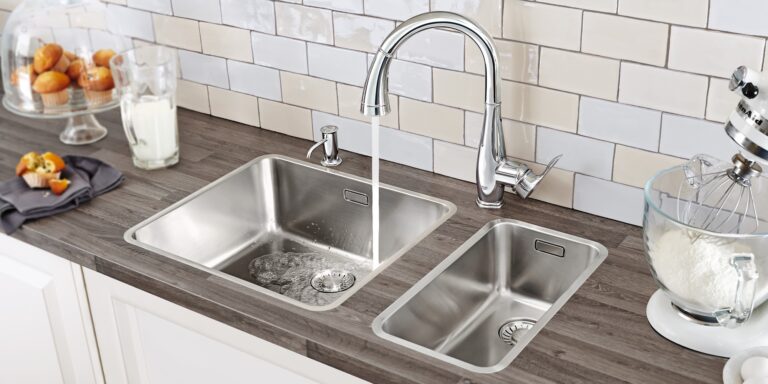Table of Contents
Purchasing home sinks is always a strenuous experience. Kitchen installations are, so it makes sense that sinks would follow suit. This is due to the number of options available and all the extra concerns that arise when deciding what to install. However, there is a perfect type of sink for every kitchen. Let’s see how to distinguish them with these sink types and tips on picking your sink.
1. Farmhouse sinks
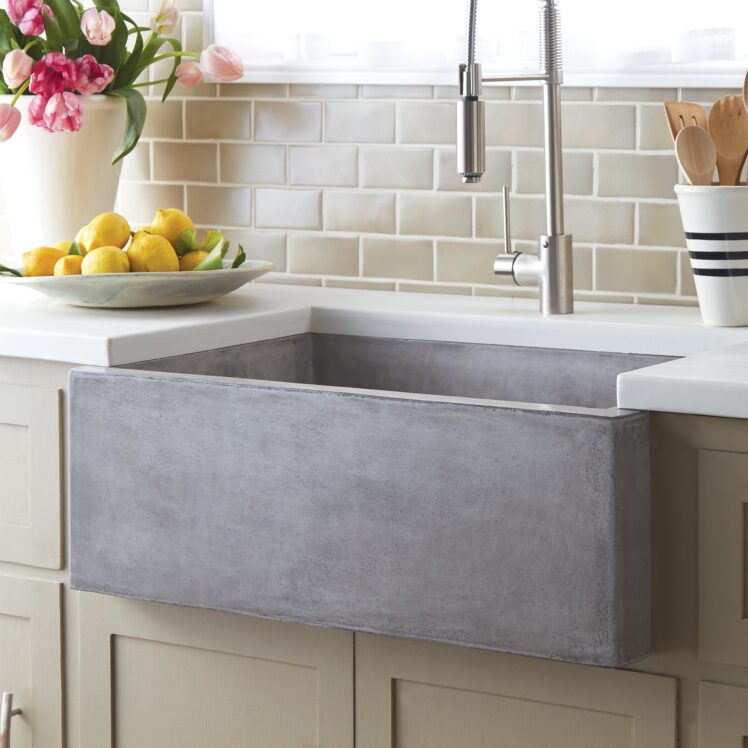
The most basic way sinks differ comes from the depth of their bowl. Some are decently shallow, while others possess significant bowls which can stash many items into it for the eventual wash. Farmhouse sinks fall into the latter category.
The farmhouse sink is known for its deep bowl, often being preferred by people who use big pots in their cooking. Anybody keen on chili or goulash may find these types of sinks very useful, as these types of sinks can stash the large pots with little issue. In addition, the process of cleaning such pots becomes far easier once we’ve ample room in the bowl to utilize. Otherwise, the large pots can become rather cumbersome and difficult to maneuver under the tap’s stream.
Getting a sink such as this has the downside of shortening your cabinet below the sink. However, this is necessary to give the bowl its depth and accommodate all the components of a farmhouse sink.
2. Undermount sinks
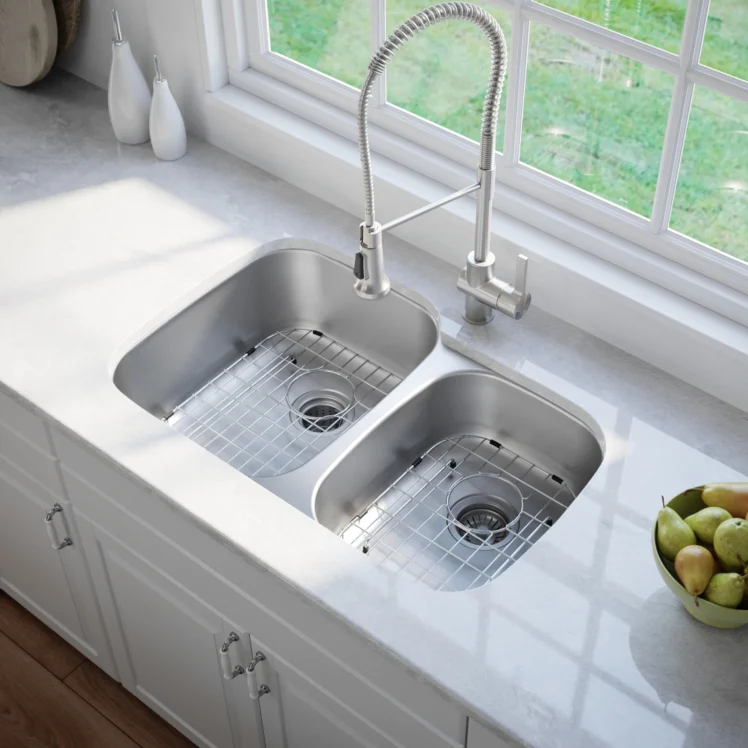
On an opposite end from farmhouse sinks, we’ll find undermount sinks. While farmhouse sinks require a lot of space to accommodate their huge bowl and may require extra consideration when looking for other kitchen elements, undermount sinks are quite different.
An undermount sink can be installed under the kitchen counter. It has no exposed rim, which can make cleaning far easier because the bits and pieces of food won’t get stuck around the rim. Maintenance is overall low when it comes to undermount sinks. They are usually made out of stainless steel, which can be quite simple to clean, especially with common cleaning products supporting this type of material. Otherwise, we may face granite and porcelain undermount sinks, which are no less reliable in terms of maintenance.
With undermount sinks, we are looking into some highly versatile and customizable items. The sink can easily be adjusted depending on the countertop it’ll be installed into. Depth, the number of bowls, materials, and any other property can be adjusted to fit what you want.
The customizability of installation is probably the key advantage of this type of sinks. You’ll be able to fully configure it to the kitchen without all the usual issues of measurements coming into question. Of course, this doesn’t mean some planning won’t be required, but undermount sinks are definitely a lot more flexible in this regard. If you wish to learn extra ways in which this customizability can be used, learn more about sink plumbing here.
3. Top mount
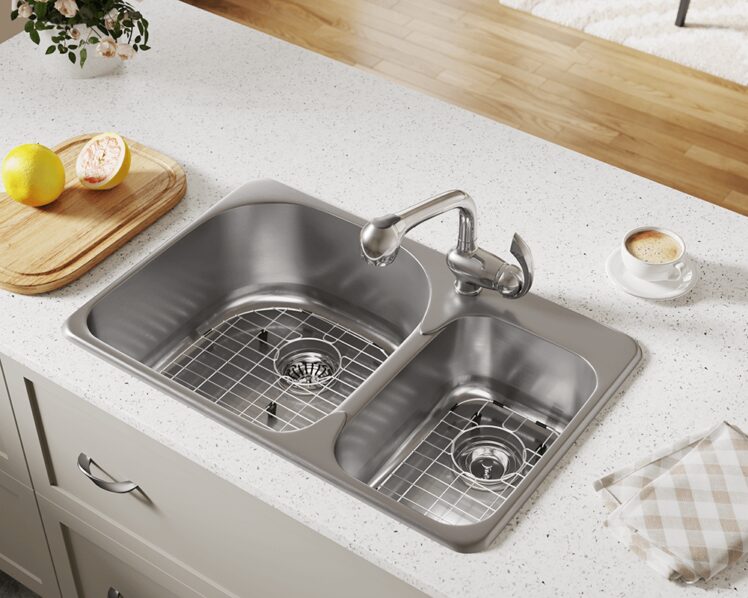
The top mount type of kitchen sink is the most common in kitchens worldwide. It is also known as the drop-in sink. The name is pretty self-explanatory. The item is installed from above the countertop, with the entire installation being affixed with screws, and the edges are lifted up, resting on the countertop. This way, we get guaranteed stability that’s not extremely tough to insert into the available countertop.
Top mount sinks are similarly customizable as undermount ones. The top mount sinks come with one or two bowls which can be adjusted in dimensions. These bowls can be of varying depths and sizes without adversely affecting the entire installation. Tap is usually installed between the two but it isn’t rare to see the variant with two taps, one for each bowl.
4. Important things to consider when getting a sink
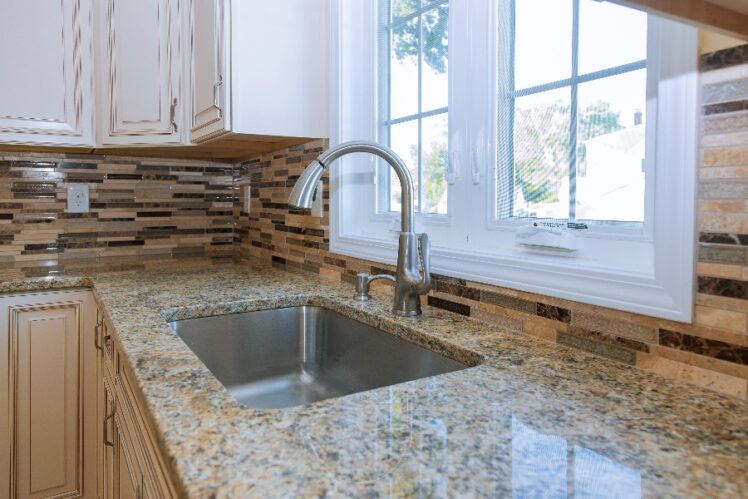
When we are aiming for a sink purchase, it’s good to know about details that should be considered. While some of these could be additionally implemented, doing so may easily incur extra costs. Therefore, it’s best to think of these details ahead of time to avoid those costs.
The compatibility of your faucet will be the first concern you should consider. While we’ve become used to the fact that sinks come with a faucet, some of them don’t. The faucet may be required as a separate purchase. In that case, we’ll need to worry about our sinks’ compatibility with the faucets. Different sinks will have different mounting setups and different faucet holes. To make sure your sink is compatible with a faucet, make sure to consult the manual of the sink and the installation method of the faucet.
The accessories your sink is capable of accommodating are also important. While some may already be present or be easy to add, such as drain covers, others aren’t. For example, suppose we wanted to install sprayers or filtered water spigots. In that case, we’ll end up getting those separately from the standard sink installation but would require an appropriate sink with all the other parts for them to function properly. It should be noted that depending on the sink type, parts could vary in compatibility.
Another thing to pay attention to is the location of the drain on your sink. This location can impact the connections with the plumbing system, leading to potential problems with water flow from and into the sink. Again, installing the sink in the proper location with extra space for connections is the best way to avoid this problem entirely.
The concern of garbage disposal is the last of the major concerns you should be wary of. If the food and dirt keep escaping down the drain and into the plumbing system, they could result in clogs. Clogs are something you don’t want in any capacity due to the follow-up issues they can produce. Therefore, paying extra attention to ways one can dispose of garbage is key to installing a sink that won’t cause issues.
There may be a few more concerns to consider, but these are the most important ones. If they are fulfilled, we’ll likely get a sink that fits our kitchen and operates well in every capacity.

